Introduction
In early January 2016 a small group of eight faculty from the College and Institute gathered for a two-day Contemplative Pedagogy retreat at the Asilomar Conference Grounds on the Pacific coast.
Through local collaborations and chance bicoastal conversations we had learned of each other’s forays into contemplative pedagogy and wanted to know more. The vision for our self-organized retreat was to gather together in an intimate workshop format for a period of sustained and creative inquiry that would enable us to experience mini versions of what we respectively do in the classroom and to really talk about why we approach teaching in the way that we do. In big picture terms, we wanted to deepen our own understanding of why contemplative pedagogy matters in higher education.
Purpose
Our purpose was twofold: First, to capture what emerged from this inquiry and to share it as a springboard for broader conversations — both online and offline —with our many colleagues equally involved or interested in contemplative pedagogy. Second, to pilot this type of retreat as a possible model for a larger Middlebury collaborative workshop on contemplative pedagogy in the future. In the process, we also wanted our work together and the relationships we built to embody and exemplify the kind of real and meaningful cross-campus faculty interaction and collaboration that will further weave the fabric of an integrated Middlebury.
Here are some pictures from the retreat. Just click to view and zoom.
Retreat Format
In preparation, we each proposed a classroom activity we wanted to share and one or two favorite readings that would collectively provide us with a common pool of reference from which to draw. Those downloadable resources are available here.
The bulk of our two days was spent leading each other in the contemplative pedagogy exercises that we use in our classrooms and then discussing and analyzing what we had experienced. Those activities included:
- An Internal state-shifting exercise for advanced interpreting students (Johnson)
- Bio-experiencing: An embodied meditation integrating the biology of trees, the human/built world, and our personal daily lives (Lapin)
- Critical Reflection and Innovative Pedagogy mini booklets (Shaw)
- A taste of the Environmental Imagination Project (Gould)
- The Noticing Game relational meditation (Rowe)
- Tai Chi Five Elements embodied reflection process (Olsen)
- Your guru is calling, parable of the 4 bricklayers, and other tips and tricks for deep attention (Gueldry)
- Attending to the present: Pausing and observing nature (McCauley)
- The Curiosity Game relational meditation (Rowe)
Each day was punctuated with opening and closing meditations — that we each took turns in leading — as well as shared meals and walks.
The final afternoon was devoted to synthesizing our experience and inquiry by creating and sharing drawings in response to two major questions: Why contemplative pedagogy? and In what ways had our retreat been meaningful and valuable?
Here are some of those drawings. Just click to view and zoom.
Activity
Here are a few of the drawings accompanied by the creators’ personal retrospective reflections.
Why contemplative pedagogy?
Marc: I am committed to educating whole beings and to helping connect people with earth, human community and inner self. John O’Donohue, in an interview with Krista Tippett, spoke of “evacuation of interiority”; I believe that such lack of interior reflection is a detriment to healthier relationships and ways of living with each other and the natural systems that support life. I practice contemplative pedagogy to provide my students with an entry point of interior experience and reflection that connects oneself with the rest of life. My drawing shows brain (intellect), heart (spirit, emotion), and fire (Qi, life energy) within an infinity to illustrate limitless potential. Contemplations help us know, experience and reflect on the spiral of life (for me earth is at the center). Outcomes include a diverse group of people connected by holding hands, tears of both pains and joys, hands that do the work and mouths that give voice and song. The arrow pointing upward and outward signifies that we take these experiences and the gained knowledge into the world as we continue to do our work.
Rebecca: My drawing begins with the heart, a heart that encompasses all of the other gifts of contemplative pedagogy. For me, good teaching always starts with love. This doesn’t mean that every day I need to like my students, nor do they have to all like each other. But I do hope (and expect) that we will all strive to love one another on a soul level. This means that when I walk into a classroom, I remind myself that each student is a unique person, with a biography I only know a small part of and whose hopes and dreams I hope to come to know a little better over the course of the semester. Daily contemplative practice has the obvious effects of grounding my students (and myself) in their bodies, reducing stress, fostering concentration and, in the way that I use it, opening up texts, concepts and content in new ways. The deeper effects of these practices, however, are to enable us to become more aware of one another as human beings, more attuned to both our strengths and our vulnerabilities and more capable of fostering love as the force within and behind all good teaching and learning.
![]()
Andrea Olsen adds:
In my view, mindfulness practices involve whole-body and whole-earth awareness. Linking science with embodiment practices is one of several lenses through which we experience this wholeness. Rather than dismissing the body as separate from academic intelligence, contemplative pedagogy practices can ground us in the present moment, including body and place. In my meditation and yoga practices, and as an artist, I have learned to detach from “first thoughts” and habitual movement patterns to access creative terrain. The retreat offered multiple perspectives through which individuals and disciplines view dynamic contemplative educational processes, providing an invigorating sharing of work with colleagues.
In what ways was our retreat meaningful and valuable?
Concretely, we found this multi-day retreat time to be a highly effective and inspiring way to explore contemplative pedagogy and to deepen our development of the skills and methods that such a pedagogy requires. With the cross-pollination of ideas different from our own, we were able to identify innovative pedagogies, learn more practices, and experience how we might incorporate them into our own courses.
On another level, we experienced working and being together in this way as tangibly building community, trust, and a core M2 culture. In the midst of big initiatives (M2, Mindfulness), there was time and space, removed from routine, for spacious, fluid conversation, and for relationships to root and blossom. We discovered shared values, identified areas for collaboration and could feel all of this further weaving together the fabric of the newer, larger Middlebury.
The retreat also seemed to illustrate how process can sometimes be more important than product or outcome. Our fluid, spontaneous, insightful and generous co-facilitation, allowed for an intertwinglularity (term coined by Theodor H. Nelson) that reminded us we are not alone, and that revitalized who we are and why we do what we do. As Joseph Manyhorses (aka J. Davis) says: “You’ve got to take the time to do what you’ve got to do to be who you’ve got to be.”
What do we desire or see as possibilities going forward?
One word appeared over and over on the colored stickies we posted around the room: CONTINUE. Our sense was (and is) that having a small group of people come together in an intimate and unhurried context should not be a one-time experience, but a template for future gatherings where “alumni” of the first gathering could continue working together and welcome others.
When it comes to contemplative pedagogy, however, our multi-day experience taught us that small-scale, retreat-like gatherings offer a particularly effective approach for professional growth and the sharing of expertise, because there is time for both structured and unstructured hands-on experiences, discussion, and meaningful interaction.
Beyond our deeply felt desire to CONTINUE with one another — and continue in ways whereby we can extend our work and sense of connection with others — we variously expressed interest in creating new structures that would nurture a growing culture of mindfulness at Middlebury’s central institutions. Some of these structures are physical. We spoke of designing new spaces in which to teach, spaces that invite contemplative, embodied and student-centered pedagogies, rather than restrict them.
Other structures are temporal. We discussed ways of slowing down and re-imagining how time both in and out of the classroom can best be shaped to serve our pedagogical goals. We imagined possibilities for other on-going cross-institutional initiatives, recognizing that beyond our inquiry into contemplative pedagogy as such, we learned much from one another about MIIS and Middlebury College as institutions. We each came away with a broader understanding — and appreciation — of how the “other” school worked and expressed a desire for more co-created workshops that might help us to forge personal ties across the wide geographic space between us.
Finally, we celebrated how wonderful it is, as teachers and learners, to be able take the time simply to ponder our desires and imagine new possibilities for enhancing the work that we do.
We would like to thank Middlebury for the M2 grant that made this retreat possible.
Rebecca Gould, MIDD
Michel Gueldry, MIIS
Julie Johnson, MIIS
Marc Lapin, MIDD
Michelle McCauley, MIDD
Andrea Olsen, MIDD/MIIS
Marianne Rowe, MIIS
Peter Shaw, MIIS

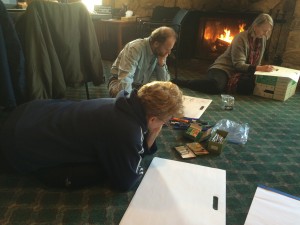

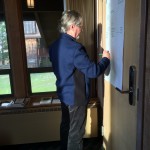
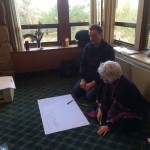
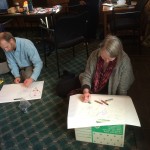
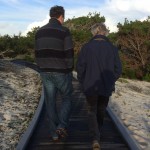
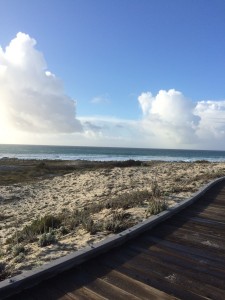
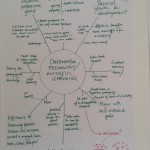
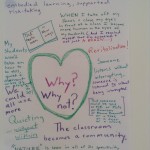
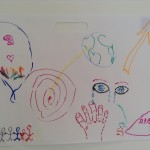




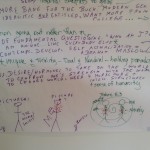
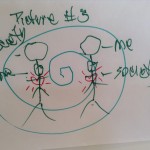
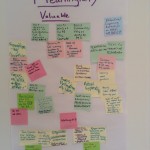
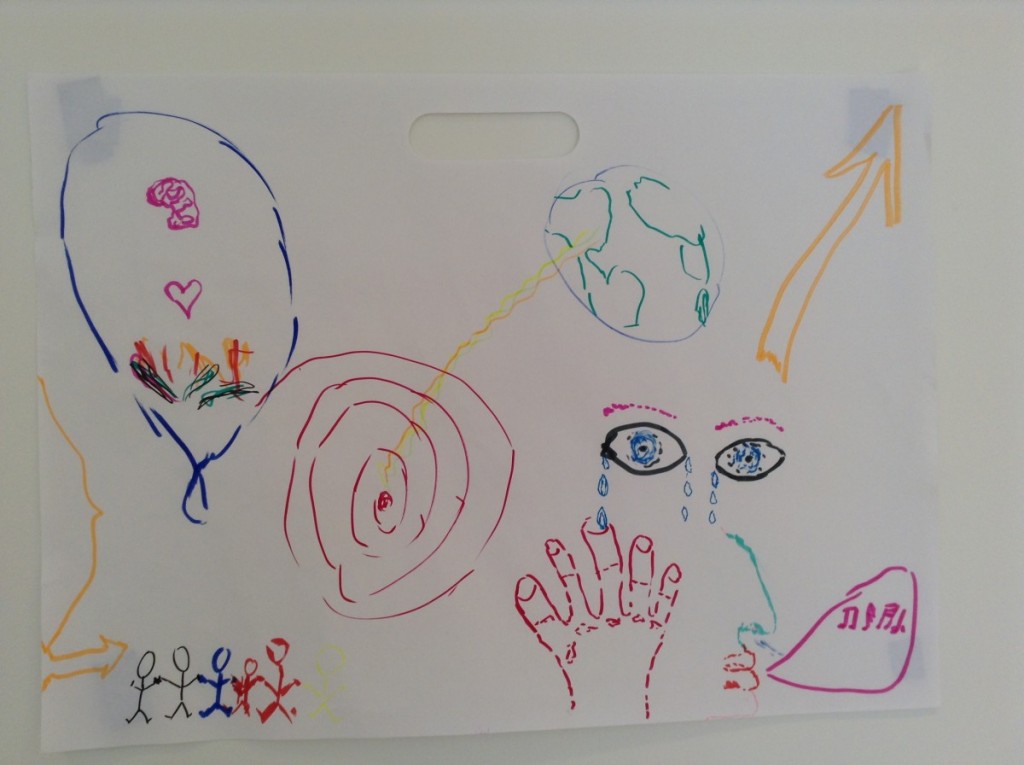
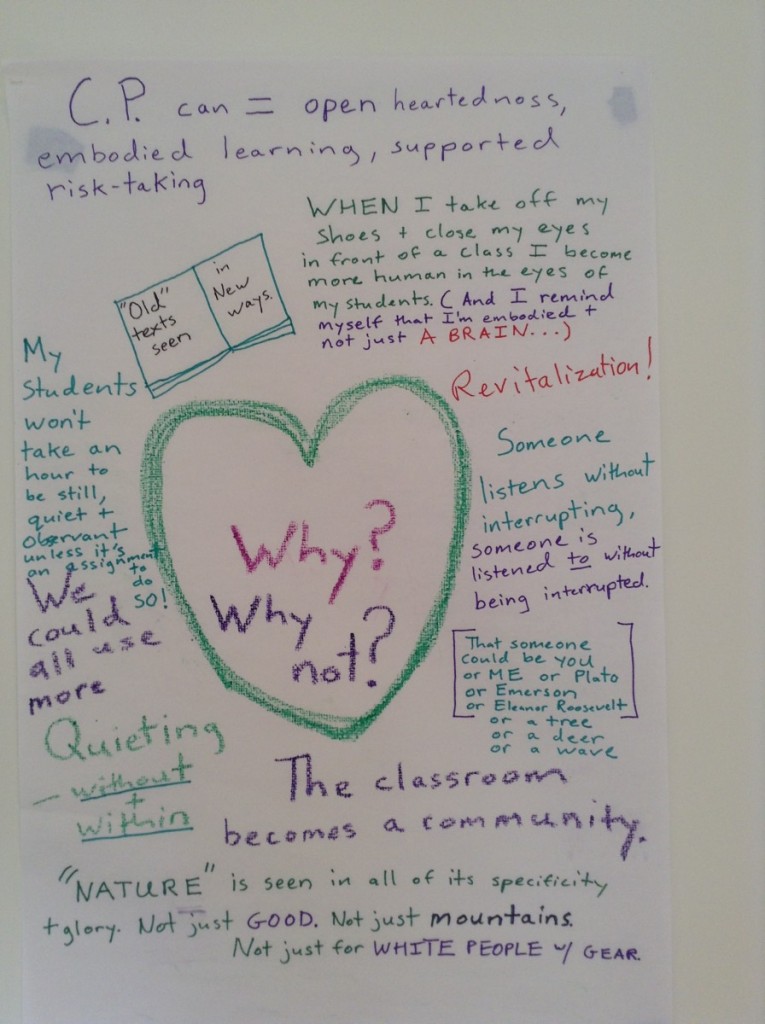
You must be logged in to post a comment.